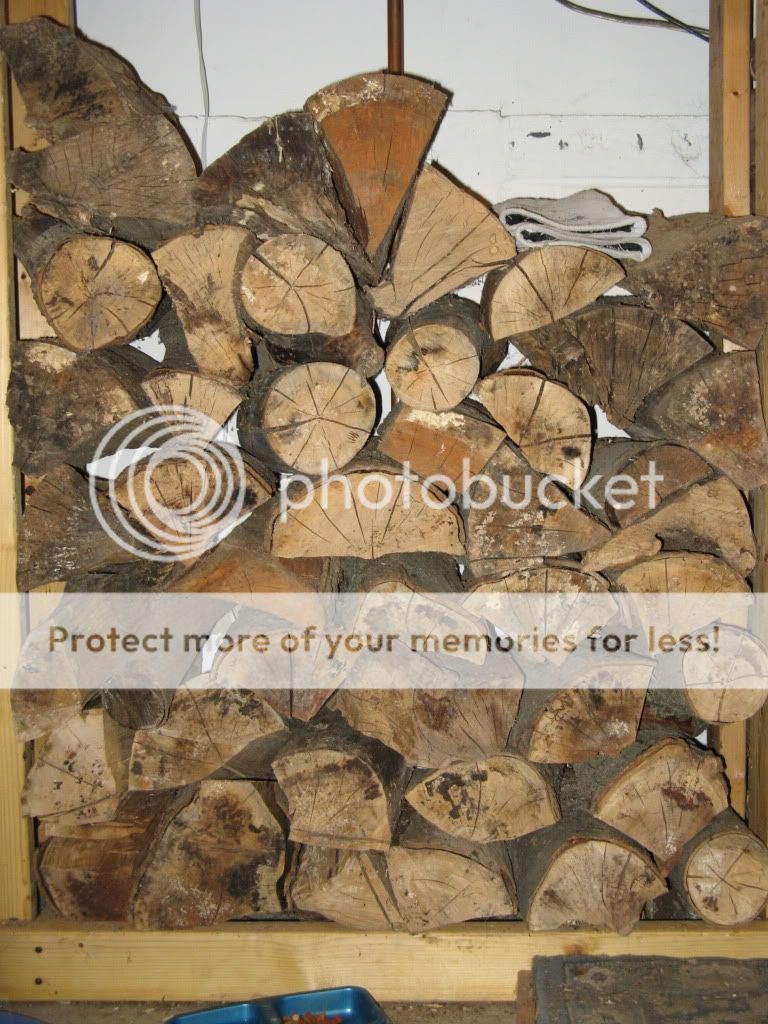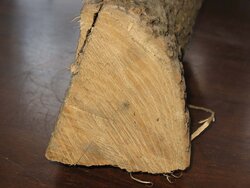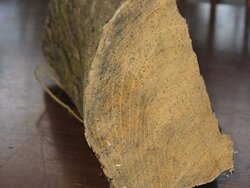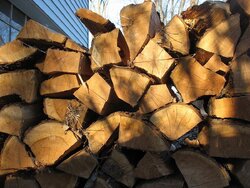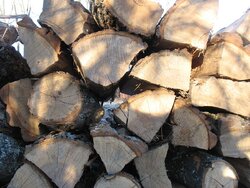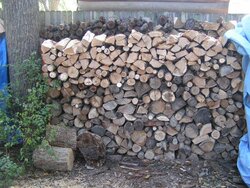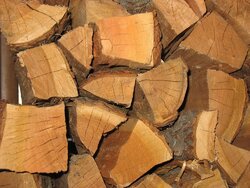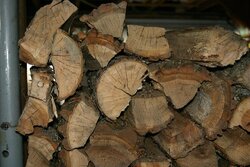As a kid I can clearly remember times when cleaning up old copper pipe joints to re-solder, when scraping gaskets off for a water pump or cyl head, etc, where I asked "Is that clean enough" and the response always was "If you have to ask the answer is no."
I think that philosophy goes to measuring the moisture in wood as well and deciding if it is ready to burn. If you look at your wood and aren't sure whether or not it is ready, then it's not.
When a good many of the splits in my pile look like these below I know I'm ready. For me that's usually about 5 seasons (summer, fall, winter, spring, summer) of sitting split and stacked outside w/ good air circulation. Sometimes it's covered, sometimes not until a few months before it will be burned.
When judging firewood in a pile I like to focus in on the rounds. Those typically are the slowest to dry out. When I find rounds looking like these (when they look like they will split in half if they were to drop on concrete) I know we are getting to the point where things are well seasoned and I just I don't see a need for a fancy electronic moisture meter to tell me if I am dry or not. If I feel the need to double check, split a piece and immediately stick it to your cheek / face. If it feels damp at all you'll feel it. That to me is a free moisture meter and that observation added w/ some good sense won't lie to you.
Here's what's in the wood rack next to the stove now that I have deemed worthy of heating my home. You will also notice that the bark is either missing or if still on, not holding on by much.




pen
I think that philosophy goes to measuring the moisture in wood as well and deciding if it is ready to burn. If you look at your wood and aren't sure whether or not it is ready, then it's not.
When a good many of the splits in my pile look like these below I know I'm ready. For me that's usually about 5 seasons (summer, fall, winter, spring, summer) of sitting split and stacked outside w/ good air circulation. Sometimes it's covered, sometimes not until a few months before it will be burned.
When judging firewood in a pile I like to focus in on the rounds. Those typically are the slowest to dry out. When I find rounds looking like these (when they look like they will split in half if they were to drop on concrete) I know we are getting to the point where things are well seasoned and I just I don't see a need for a fancy electronic moisture meter to tell me if I am dry or not. If I feel the need to double check, split a piece and immediately stick it to your cheek / face. If it feels damp at all you'll feel it. That to me is a free moisture meter and that observation added w/ some good sense won't lie to you.
Here's what's in the wood rack next to the stove now that I have deemed worthy of heating my home. You will also notice that the bark is either missing or if still on, not holding on by much.
pen



